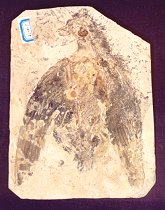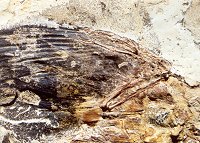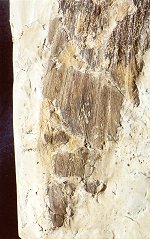���������������������������������������������������������������������������������������������������������������������������������������������������������������������������������������������������������������������������������������������������������������������������������������������������������������������������������������������������������������������������������������������������������������������������������������������������������������������������������������������������������������������������������������������������������������������������������������������������������������������������������������������������������������������������������������������������������������������������������������������������������������������������������������������������������������������������������������������������������������������������������������������������������������������������������������������������������������������������������������������������������������������������������������������������������������������������������������������������������������������������������������������������������������������������������������������������������������������������������������������������������������������������������������������������������������������������������������������������������������������������������������������������������������������������������������������������������������������������������������������������������������������������������������������������������������������������������������������������������������������������������������������������������������������������������������������������������������������������������������������������������������������������������������������������������������������������������������������������������������������������������������������������������������������������������������������������������������������������������������������������������������������������������������������������������������������������������������������������������������������������������������������������������������������������������������������������������������������������������������������������������������������������������������������������������������������������������������������������������������������������������������������������������������������������������������������������������������������������������������������������������������������������������������������������������������������������������������������������������������������������������������������������������������������������������������������������������������������������������������������������������������������������������������������������������������������������������������������������������������������������������������������������������������������������������������������������������������������������������������������������������������������������������������������������������������������������������������������������������������������������������������������������������������������������������������������������������������������������������������������������������������������������������������������������������������������������������������������������������������������������������������������������������������������������������������������������������������������������������������������������������������������������������������������������������������������������
|
 |
 |
 |
 |
 |
|
 |
 |
|
| |
�������������������������������������������������������������������������������������������������������������������������������������������������������������������������������������������������������������������������������������������������������������������������������������������������������������������������������������������������������������������������������������������������������������������������������������������������������������������������������������������������������������������������������������������������������������������������������������������������������������������������������������������������������������������������������������������������������������������������������������������������������������������������������������������������������������������������������������������������������������������������������������������������������������������������������������������������������������������������������������������������
�������������������������������������������������������������������������������������������������������������������������������������������������������������������������������������������������������������������������������������������������������������������������������������������������������������������������������������������������������������������������������������������������������������������������������������������������������������������������������������������������������������������������������������������������������������������������������������������������������������������������������������������������������������������������������������������������������������������������������������������������������������������������������������������������������������������������������������������������������������������������������������������������������������������������������������������������������������������������������������������������������������������������������������������������������������������������������������������������������������������������������������������������������������������������������������������������������������������������������������������������������������������������������������������������������������������������������������������������������������������������������������������������������������������������������������������������������������������������������������������������������������������������������������������������������������������������������������������������������������������������������������������������������������������������������������������������������������������������������������������������������������������������������������������������������������������������������������������������������������������������������������������������������������������������������������������������������������������������������������������������������������������������������������������������������������������������������������������������������������������������������������������������������������������������������������������������������������������������������������������������������������������������������������������������������������������������������������������������������������������������������������������������������������������������������������������������������������������������������������������������������������������������������������������������������������������������������������������������������������������������������������������������������������������������������������������������������������������������������������������������������������������������������������������������������������������������������������������������������������������������������������������������������������������������������������������������������������������������������������������������������������������������������������������������������������������������������������������������������������������������������������������������������������������������������������������������������������������������������������������������������������������������������������������������
| EXTINCTIONS ULTIMATE - Complete Bird with Feathers |
|
BIRDS
|
| Stock Number XVB24 |
|
|
|
|
Name:
Unidentified Primitive Bird
Age: Early Cretaceous
Formation: Jiulongsong Member, Chaomidianzi Formation (Jehol Group)
Location: Sihetun, Beipiao City, Liaoning Province, China
Size: Bird is almost 10 inches long, 6.5" wide
This specimen is not for sale
Click here for similar specimens that are for sale
This is simply an unbelievable fossil. It is a complete fossil bird from the Early Cretaceous layers of Liaoning Province, China. This formation has produced the ultra rare feathered dinosaurs, as well as a handful of fossil birds with feathers preserved. This is one of those special bird fossils.
Most bird remains in the fossil record are incomplete - disartculated bones or a stray feather. Occasionally, an articulated bird skeleton is unearthed. Almost always, the skeleton is poorly preserved with no feathers intact. This specimen is not like most fossil birds - it is fully complete with its array of feathers beautifully displayed. The bird itself is preserved in the splayed-open ''spread eagle'' pose with the wings laying out to each side. This feature displays the wings, body, and head wonderfully. The head is preserved in profile, making for a classic pose. The crested plumage of feathers on the head is simply striking. The wings have the claws intact (see close-up photo #2), showing that it was an extremely primitive bird. The legs and tail area are also well preserved. But the truly unique feature of this bird is the feather pattern - it is fully preserved. From the fine down feathers on the head and neck to the LONG flight feathers on the wings, the detail is simply amazing. The individual feather barbs are easily seen (see close-up photo #3) - extremely rare detail for feathers in the fossil record. Not only is this bird complete and beautifully articulated, the feather preservation is absolutely incredible! These features make this specimen one of the most unique and special fossils we have ever had - easily one of the best preserved fossil birds ever found. This is a top quality, textbook fossil that most museums around the world would love to have as the keystone of their Avian collections.
|
|
����������������������������������������������������������������������������������������������������������������������������������������������������������������������������������������������������������������������������������������������������������������������������������������������������������������������������������������������������������������������������������������������������������������������������������������������������������������������������������������������������
|
|
|
|
 |
 |
|
 |
 |
|





